|
1. Who were your teachers or influences?
I found a home with the followers of the ancient Greek painter Apelles. My favorites, Titian, Rembrandt, and Odd Nerdrum all share characteristics which have roots with Apelles, such as that rough “macchia” style. Their painted flesh is famous for feeling “fleshy.” There is a heightened sense of drama and pathos in their pictures. Also their masterpieces tend to be quite dark. The most talented and trained in this lineage have a special kind of freedom because their concern is no longer much about style or fashion. They are free to go deep into the narratives and to work at portraying believable and recognizable emotions. There are many more who have taught me. A few names I should mention are G.F. Watts, Käthe Kollwitz, Goya, Eugène Carrière, and Andrew Wyeth. 2. What techniques or tricks did you find most useful when learning to paint? I will say something about kitsch later on. Regarding painting technique, the brush is one of many good tools for manipulating paint. Rags and fingers often work better for some things. But we can do more than just add paint. We can play around with removing it by Sanding, scraping, and also wiping with turp. (Make sure to take all health precautions!) Rembrandt used coral to scrape his paintings. I especially envy how skilled Rembrandt is with the palette knife. I tend to stick with the “fat over lean” idea. In other words, if I need medium, it is more turp early on and then more oil towards the end of the piece. This allows it to dry evenly. I use Nerdrum’s marble dust ground recipe on Linen. It is unlike anything I’ve found on prepared canvases in stores. It grips the paint. I find it very awkward to work with gesso on cotton now. There are countless ideas when it comes to composition. I learned one of my favorites in music, but it applies to painting, Theme and Repetition. Identify a primary shape and find ways to repeat it rhythmically in the picture. Like the repeated “V” in Titian’s “Punishment of Marsyas.” When done well, it may be unnoticeable to the average viewer, but it creates a pleasing, dance-like, atmosphere. 3. What are 3 key principles of making good art, in your opinion? Kitsch is probably the best name for what I make and like. To make high-Kitsch I see at least 3 key principles. 1 - Work to make the painting as pathetic, sentimental, or dramatic as possible. If, along the way, the piece feels “cheesy” or like the characters are “poor actors,” it is probably because the expressions do not feel believable with the narrative. Aristotle writes about this in his thoughts about “Mimesis” in his Poetica. 2 - As you make a work, compare it to pieces that you want it to resemble. A side by side comparison with a masterpiece can feel like an ego crush, but it is probably the best way to learn. Solutions to problem areas often seem to pop out. Be careful though, imitation is a largely undervalued skill in our time. We take on this topic in this video - https://www.youtube.com/watch?v=xBXaj4lMz0o 3 - Some people ask us to be ourselves. To me this is a funny request. If by this they mean, embrace being earnest, then I would agree. I like when people say and paint what they mean. I would also like more painters to make images of what the want to be true. Many painters say they want their work to “change the world.” OK. Change it in what way? I have known some prophets who have painted things into reality. This is a dangerous skill. If you ever realized that a painting you made came true, I imagine you were first a bit shocked, and then considered being more earnest about your next project. 4. What are the most common mistakes that you see other artists make? When people work from photo they often let the photo decide what is best, whereas their imagination and judgement could actually improve it. These folks would do well to work without photo for a while to realize the possibilities. Working with live models can be a dramatic process for the beginner. It is is often expensive or difficult to arrange. But after live-model techniques are habitualized the painter is much more free. There is the issue of time. I can’t call it a mistake to paint infrequently, but many of us underestimate how much time a successful painting will take. I often hear cases where master painters claim their work consistently takes more work than they would have imagined. Classical painting is one of the biggest time consumers I know about. So until the 21st Century Classical Renaissance is well established, be prepare for your pay-to-hour ratio to be … out of sync. 5. Can you break your painting process down into 10 steps, or less, for us? 1 - Doodles and thumbnail sketches. This step is good at night or on trips. 2 - Get the materials ready. First stretch, then “Size/glue” the Linen (Some use Rabbit skin glue) 2 layers. 3 - Mix and apply Odd’s Oil/Marbledust mixture - 2-3 layers (sometimes a layer takes a week to dry) 4 - Transfer the sketch/idea to the canvas. (often a grid is helpful for this) Then play with the composition until it feels natural. 5 - Usually go with the figure/s first. 6 - Determine setting/background 7 - Change things, struggle, change things, struggle… 8 - After a plateau, hide the painting. After a while, come back to it. If I love it, great. If I don’t, take it back up or hide it again. 9 - If I love it, then varnish if needed. Interview with Luke Hillestad on Youtube: www.youtube.com/watch?v=xBXaj4lMz0o
0 Comments
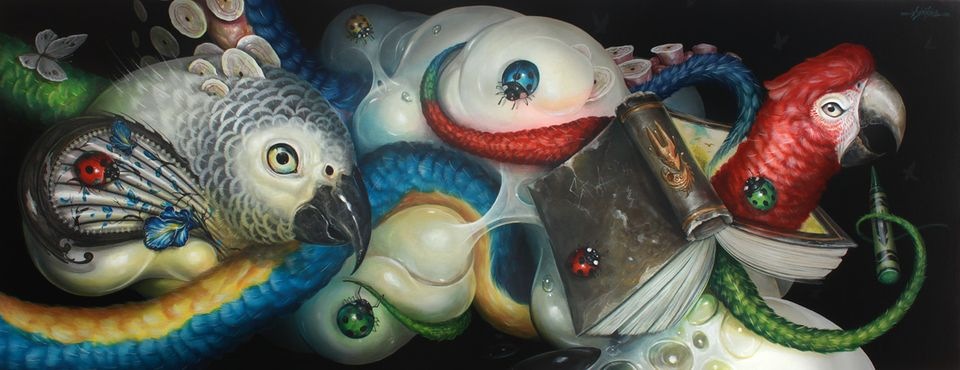 1. Who were your teachers or influences? Well these are two very distinct things. My influences run a large gambit. From old fairy tales and books from my youth, to Tom Hatten teaching me how to draw Popeye from the television and all the cartoons of the late 70's and 80's (and before), to trips to the zoo, to Juxtapoz and Heavy Metal magazine and comics from back in the day, to tattoo imagery, all the way to the old masters hung in museums, these were my influences growing up. It wasn't until I got into graffiti however that I started really getting interested in pushing myself in the direction towards becoming a better artist. It was the kick in the butt that I needed to really focus my attentions. It is where I found some of my most important teachers, mainly Natoe, Axis, Plek and Kofie, Epic, Vox and Tron, and a lot more than I can name here. These guys introduced me to techniques and disciplines that I use to this day. Things which I should have learned in art school but for some reason it wasn't taught. I also need to show some respect to Ken Bustamante, Bill McCavoy, and Kevin Pasko who really taught me how to use the computer programs that have become essential in my day to day life. 2. What techniques or tricks did you find most useful when learning to paint? VIDEO: How to prime a wood Panel The most important lesson was how to prepare a surface. It was Axis who broke it down. Use good quality Gesso, smooth foam rollers (the white hotdog ones from hardware stores) and sand in between multiple layers with fine grit sand paper, about a 220. Not fighting with my surface has been key to pulling off a successful painting. I also found that Matte Medium is a great surface to paint on and will sometimes prime with just that if I wan to do collage or have the bare surface show through. 3. What are 3 key principles of making good art, in your opinion? 1. Have a good idea, make sure it means something to you. 2. Use archival quality tools to ensure idea lasts once complete. 3. Work hard on your technique to pull off your idea to the best of your abilities, that is the only way to get better. 4. What are the most common mistakes that you see other artists make? I have to be honest, I mainly just focus on my own mistakes. Maybe one mistake is more socially than with their actual art. I have seen artists get big egos about there work and the way they treat people, and it has always been a huge turn off. 5. Can you break your painting process down into 10 steps, or less, for us? Here is one of the more complicated processes I use. A lot of times, these days, I'll just start painting from an idea in my sketchbook and a couple images of gathered photo reference, no sketching on the canvas whatsoever, but here is the more long winded super thought out version: 1. I keep all my ideas in a ongoing series of pocket size sketchbooks, from which I select the idea for a painting from or combine ideas together from. 2. I scan it into my computer and compose together to fit the dimensions of the canvas to be painted. Print out as a yellow line and draw it again at a larger size and work out more details. 3. Scan it back into the file and make a rough color study in photoshop 4. Prime canvas, about four layers of gesso, sanding in between 5. Project the linework on the canvas or graphite transfer and spray workable fixative over the linework. 6. Apply a layer of matte medium 7. Work out background and paint from back to front 8. Finish final highlights, and sign the piece 9. 2 or 3 coats of Gloss Varnish, 1 or two final Satin coats of varnish. 10. Photograph and frame. here are a couple links to some painting process videos I have on Youtube: https://www.youtube.com/watch?v=loktgUqbsrY https://www.youtube.com/watch?v=-8xQhGGKjek https://www.youtube.com/watch?v=9N1sWNMPMxw https://www.youtube.com/watch?v=Tlp4bxdY_qE https://www.youtube.com/watch?v=uA3HKuGEO38 https://www.youtube.com/watch?v=58lswdTQOc0 https://www.youtube.com/watch?v=9ReiYl8XYKc https://www.youtube.com/watch?v=EDHNPlMpsbM https://www.youtube.com/watch?v=cpR-9rFggA4 1. Who were your teachers or influences?
Dayna mason, Karen Russo, and Michael Hussar. So many influences. Old masters work (Caravaggio, Peter Paul Rubens, Van Eyck, Rembrandt, John Baptiste, etc). 20th century stuff, Sargent, Adolf Hiermy Hershel, Andrew Loomis, Robert Mcginnis, Frank Frazetta, Norman Rockwell, Robert Williams, Gottfried Helnwein, John Currin, Luis Ricardo Falero, Sargent, Phil Hale, old 70's, 80's graffiti subway artist like ernie, quick, seen, dez, dondi, lee, etc. slick, risk, zodak, hex. The list goes on and on. 2. What techniques or tricks did you find most useful when learning to paint? Underpainting, grisaille, wet on wet. Mixing in the work. Drawing. Fully planning out the piece. 3. What are 3 key principles of making good art, in your opinion? Number them? How about I color them? Blue: Solid foundation Yellow: Meaning Red: Emotional evocation, positive or negative. Some kind of connection emotionally. 4. What are the most common mistakes that you see other artists make? Copying other artists without adding anything of their own soul. Painting the same thing over and over. Not taking risks. Painting for audiences, not themselves. Not making a body of work. Painting for pay alone. 5. Can you break your painting process down into 10 steps, or less, for us? 1. I start with a few sketches, then work out the composition and draftsmanship. 2. Then I use blue saral transfer paper to transfer the drawing onto panel. 3. Depending on what medium I'm going to use, I do a thin wash of raw umber to do a underpainting in 3 values: dark, middle, light. 4. Once that is dry, I then start adding fat over lean, building a strong foundation in grey values, shadow and light. 5. Once that is dry, I lay out a select pallet: Titanium buff, raw umber, vandyke brown, alizarin crimson, indian yellow, ultramarine blue, chromium oxide, yellow ochre 6. I then start adding color over the grey tones; building up values, but still letting the underpainting come through. 7. Finally, I add glazes and frosting to finish the piece. 1. Who were your teachers or influences?
Some of my early influences where comic books, cartoons, horror movies and one of the biggest was album cover art. Looking through my brothers vinyl collection and seeing all that art changed my world. Made me realize what kind of art I could possibly make. Seeing the artwork for Black Sabbath debut album and the feeling I got from that is still something I find that I’m still trying to get out of the work I'm even doing today. Not the darkness one may think of but it’s the somberness of the imagery I love. I also had an art teacher in junior high named William Robinson that made a huge impact on my learning curve and taught me how to approach art in a new kind of way. He taught me how to not hold onto something too dearly and how discovery can be found in experimentation throughout art. My biggest influence and still is today would be my father. The man is a true genius and I know the word genius holds a lot of weight but this man truly is. He is the one who has showed me all the tools that I still use today in my everyday life of creating. He gave me the knowledge that anything is possible as long as you set your mind to it. He’s also the one that got me to switch from acrylics to oils. 2. What techniques or tricks did you find most useful when learning to paint? This is a question that I always find troublesome. Due to most of the time I'm not even quite sure how I get the results that I do. For the most part I would say I am self-taught. I find myself coming to my own conclusions in results in a much different way than probably most. I paint in a way that's more of an illustrative approach where I draw out with graphite my entire piece before approaching it with oils on canvas or panel. Then block out my colors so the pencil is still transparent through the paint. Then block in the colors. I add other colors to give depth shadow lighting etc. With the mindset of keeping a wet on wet approach. If paint is dry when I come back to the next session I normally will rub a thin coat of linseed oil over the surface to give it a much more workable surface to begin with. My paintings are normally 3 to 6 passes over the course of developing the piece. One thing I do find very important is to use good brushes and good paint brands. Not to say that someone needs to go crazy and buy the most expensive stuff. But, if you use the quality brands you will find a much easier and much more rewarding time within the work. Normally I use Golden for gesso, Winsor Newton (nostalgic. it’s the first oil paint my parents ever got me) and Gamblin. White Sable - Robert Simons Brushes. Turpentine whatever brand the local hardware store has that month. 3. What are 3 key principles of making good art, in your opinion? 1. Paint for you! 2. Never try to follow a trend 3. Stay true to yourself! And always remember why you started this to begin with don't get caught up with the bullshit 4. What are the most common mistakes that you see other artists make? Get your work out there and don't wait for someone to come to you. If they don't know who you are then it’s pretty safe to say they don't know your work. Find the proper venues to host your work. If you're a figurative painter you're not going to try to get an exhibit at a gallery that only shows abstract work. If you're just starting out show your work anywhere you can. In the beginning I showed my art anywhere I could, bars, coffee shops, nightclubs and on the streets of Boston. Always treat every opportunity like it could be the best of your life. Remember to remain professional, It's a business just as much as it's art. Respect your work if you don't no one else will. Be careful with your pricing in the beginning. Let it grow overtime. Once you go up you can't come down. I always recommend this book if someone is just starting out. I found it hugely helpful: “Taking the Leap” by Cay Lang 5. Can you break your painting process down into 10 steps, or less, for us? Here is somewhat of my working process within this video https://youtu.be/yoIhYVmw9qs 1 - For panels I always use foam rollers with gesso acrylic. Put on two to three light coats before sanding then repeat normally put anywhere from. Seven to Eleven coats of gesso. If I am painting on canvas or linen I use an oil ground (by Gamblin) that I apply with pieces of cardboard kind of like using a kraft for plastering. Applying each coat very thinly and sanding between coats until I get a glass like finish. 2 - 95% of the time I draw out the theme of my painting with graphite on the panel. 3 - Depending on the tone I want the painting to represent I brush out a very thin coat of that color over the entire surface. So for instance if it's going to be a cool tone throughout the painting I will use a blue. If it's going to be warm tone then I might use a brown or red. 4 - when that last step is dry I begin to build out and establish my colors. Starting with the figures (it’s always more fun that way) 5 - then I begin to establish my background colors and tone. This begins to change everything within the work. It makes me understand my highlights and direction so much better. 6 - At this point I begin to go back into the figure(s) and reestablish my highlights and shadows. 7 - This process of building layers and passes is something I do over and over again each time blending more with the brushes depending on what type of look I'm trying to achieve. 1. Who were your teachers or influences? My art teachers are other works of art and artists that inspire me. It could be a medieval painting or a vintage photograph that teaches me what aesthetics are most pleasing to use in my own work. I glean my environment for influence and inspiration. 2. What technique did you find most useful when learning to paint? Digital art. This technique is useful in the fact that you can just worry about learning how to paint and not waste energy on anything else like set up/clean up, erasing hard-to-erase reworked portions, dipping/ cleaning your brush, dispensing and mixing media, etc. 3. What are 3 key principles of making good art, in your opinion? 1. A visually appealing and consistent aesthetic 2. Something that provokes emotion 3. A good use of cleverness 4. What are the most common mistakes that you see other artists make? Not using highlights and shadows to create something with more depth (with the exception of certain illustrative styles). 5. If you were to train someone to paint like you in 1 week, what would their training look like? Vigorous because 1 week is surely not enough time. If they only have a little art experience then they will need to learn the basic foundation of drawing and painting. From there, we will study the aesthetics of tattoo art and then, lastly, study my own personal aesthetics to narrow it down. It's be an intense week lol 6. Can you break your painting process down into 10 steps for us? 1) brainstorm the concept. 2) look for reference photos 3) digitally mock up the concept/design 4) Using a Wacom tablet and the program ArtRage, I choose a canvas texture for my painting surface to lessen the digital feel of every piece (I love to paint digitally but love the look of natural painting) 5) i used several different tools to mimic natural brushes and paint: Marker/pen, airbrush, Charcoal, Pencil 6) I use my digital mock up as a template and refer to it often and other photos for detail reference 7) Like most digital painters, I paint in different layers for different colors which is then merged in the end 8) I sometimes use a Watercolor brush tool to put a vintage wash on the finished illustration 9) I import the file into photoshop where it is color corrected 10) The piece is printed on an inkjet printer and made into a giclee 1. Who were your teachers or influences?
My influences are many. I can describe the first time I saw a Norman Rockwell painting as a 5 year old child as being like seeing a magician perform a trick that was both captivating and mysterious all at once. The 5 year old in me still admires the "magic trick" in art. Artists like Jan Van Eyck, Maxfield Parrish, Hans Holbein the younger, . . . to a lesser extent, . . . Bougereau, Gerome, and Vibert still hold sway in thoughts about painting. As we get older and mature a bit, we don't look at these guys as much, but we still appreciate how they enticed us into pursuing the dreams of being an artist, . . . there's hundreds of artists that I have admired and have influenced me over the years. 2. What technique did you find most useful when learning to paint? Watercolor paintings techniques with body color and dry brush 3. What are 3 key principles of making good art, in your opinion? 1. Drawing is important. Drawing is a complicated thing. It can be a complete art in itself, a series of quick markings to describe something, to capture a fleeting moment in time, . . . a foundational structure to be later used like a map or a plan to make a more complete artwork later . . . I think when people in my field ask how someone's "drawing" is, they tend to be referring to their ability to draw either from their imagination or from life, . . . their quality of line, their understanding of structure, light, form, etc, . . .Drawing is very important in my field 2. Being able to make a connection between what you are making and why you might be making it. It's important to be cognizant of what you are trying to say. Your voice is a direct connection to your absorption of the sensory information you have taken into your brain over the course of your life. 3. Being aware of history, of culture, . . . art is a continuing conversation and to just be completely immersed in your own world per say, can be both problematic as far as connecting to other humans and beneficial as far as having your own voice, . . . it is a fine line I think. 4. What are the most common mistakes that you see other artists make? Sometimes artists exhibit their work when they aren't ready yet, . . . it is also a tricky generalization to make, but I believe that many young artists just haven't had the life experience yet. More often than not, where that invisible line is drawn is kind of up in the air. I think many of the more seasoned artists can recognize when someone just doesn't have it yet, . .. whatever that "it" is. 5. If you were to train someone to paint like you in 1 week, what would their training look like? I don't know if I can train someone to work like me to be honest, . . . especially in a week. I think they would already have to know how to draw and render at a relatively competent level. I'm not saying my work is hard to replicate, but there might be some nuance that is not attainable in a weeks time, . . . That said, I would sit a person down and make them sit through hours of the same visual information I grew up looking at, . . . sort of like Malcolm McDowell's character from A Clockwork Orange(1971), . .. strapped to a chair, eyes forced open, . . . viewing German Expressionist movies, Film Noir, Atomic Age Science Fiction, Classic Horror movies, Hitchcock, Orson Welles, . . . they would have to study Victorian watercolor techniques, . . . curvilinear brushstroke exercises, . . . graphite rendering, etc, . . . you get the picture. |
Art GoopArt Goop is a Q&A for artists by artists. We ask questions designed to examine the techniques and methods of some of the most inspiring artists working today. Categories
All
Archives
September 2017
|
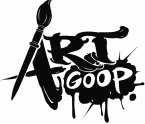
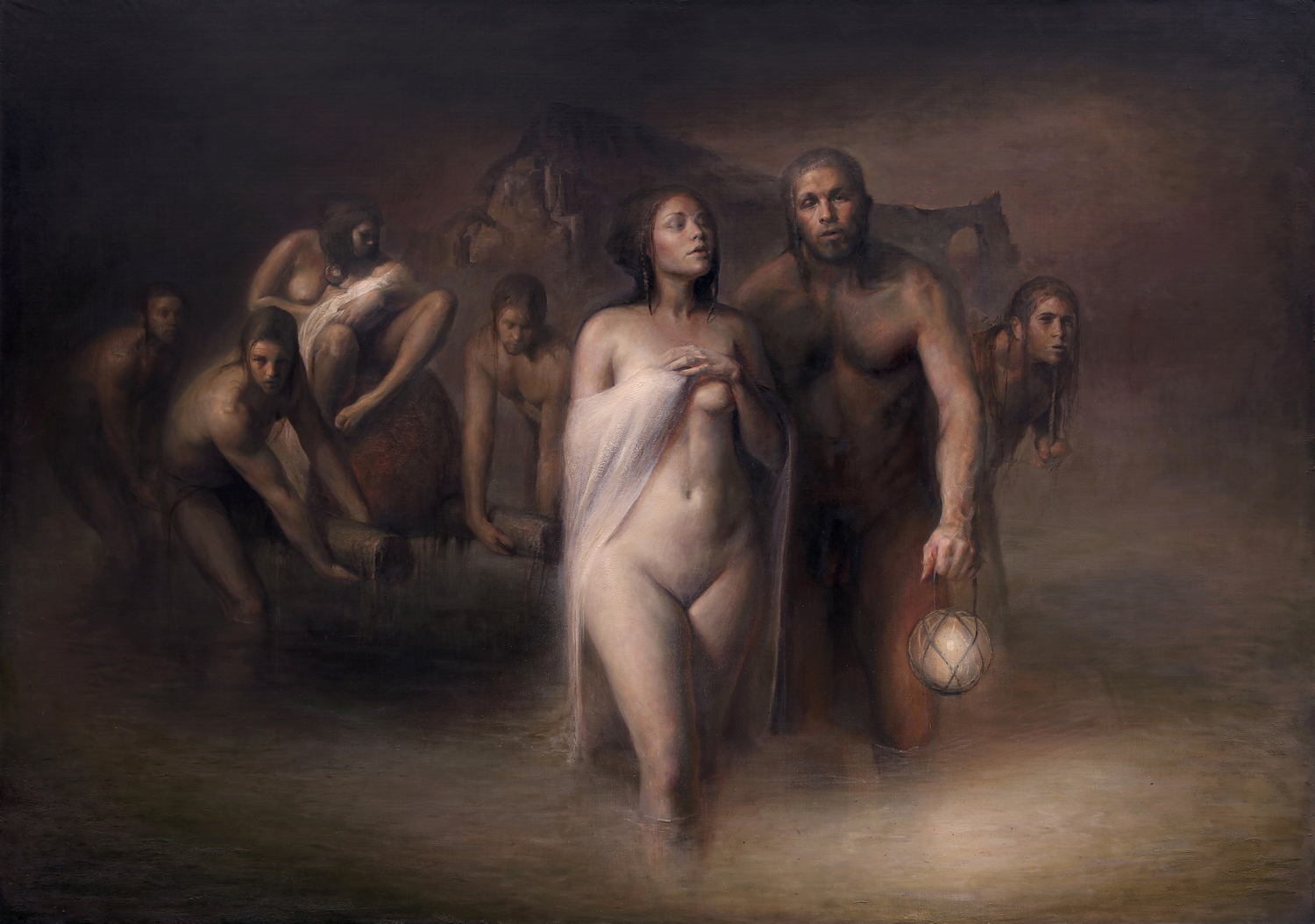
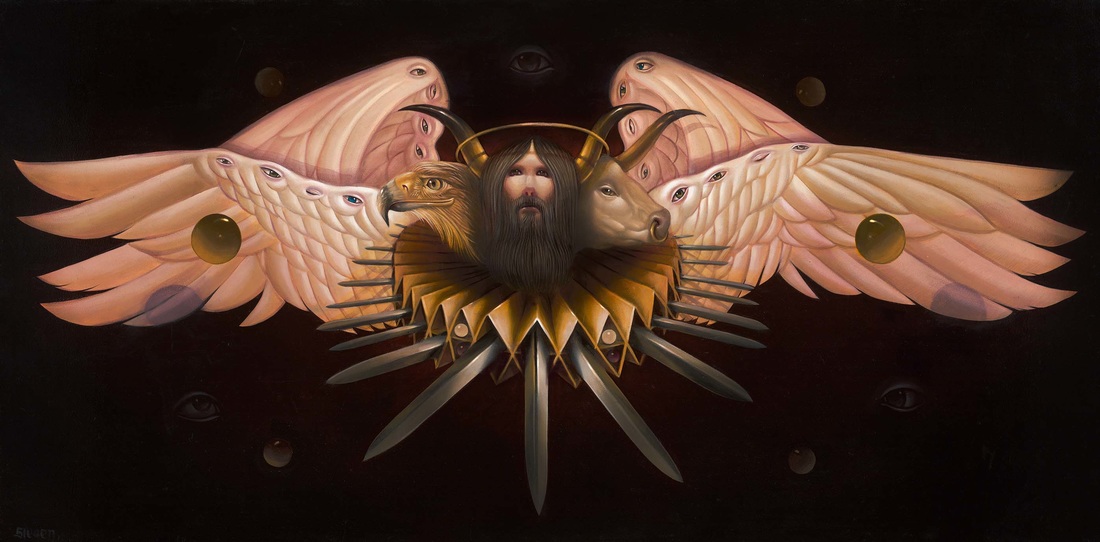
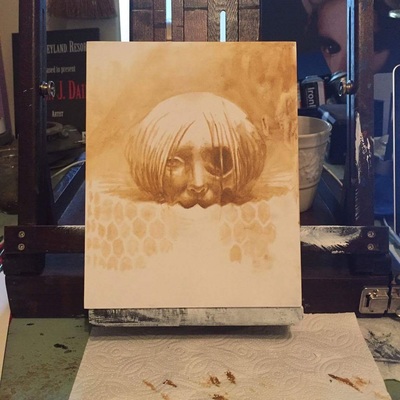
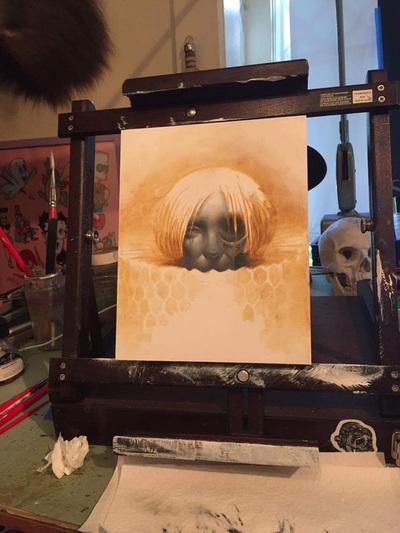
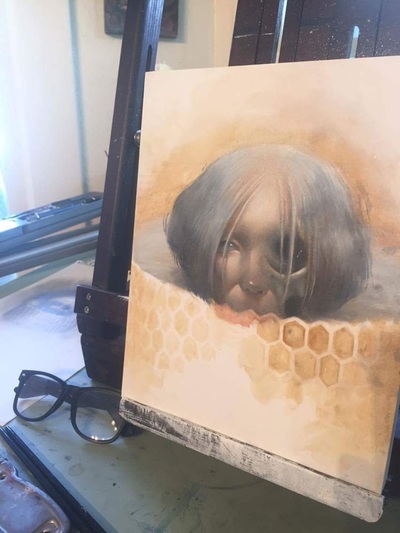
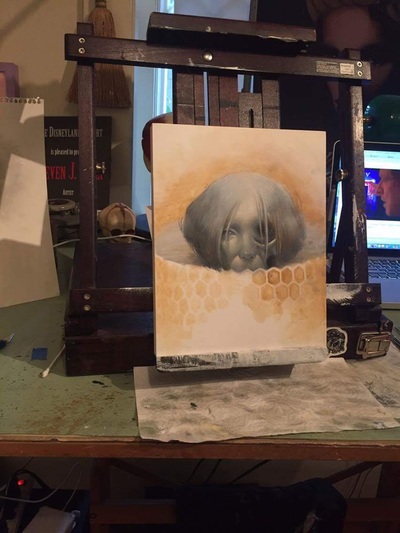
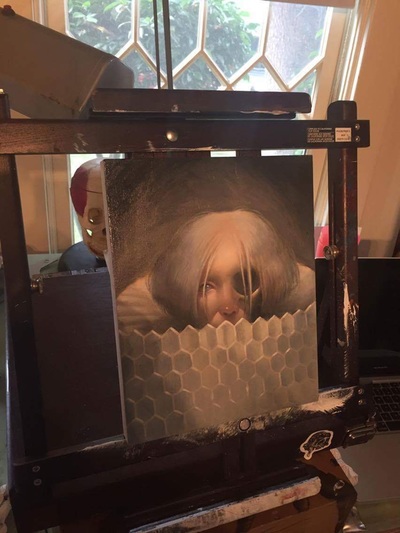
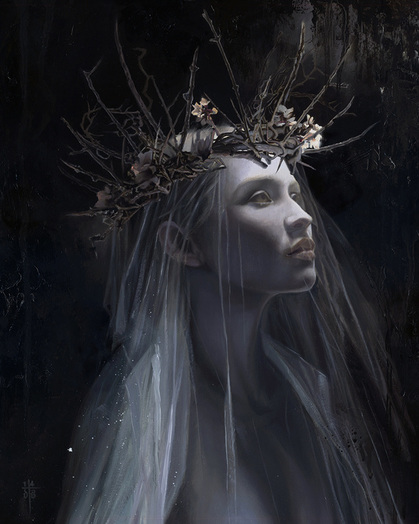
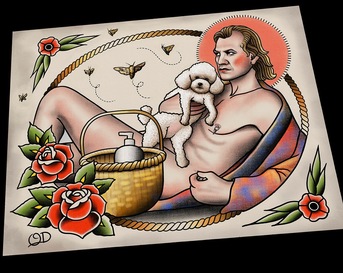
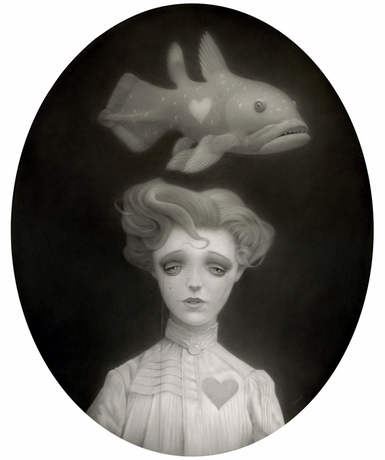
 RSS Feed
RSS Feed